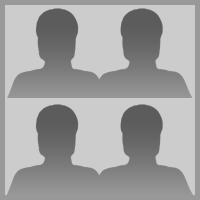Acupuncture And Touch Tui Na

Owner: O'Malley
Group members: 1
Dr. Tui Na, also called Dr. Ping Yee, is a Chinese herbalist and practitioner who execute moxibustions on sufferers. Moxibustions are often used as a member of the Traditional Chinese Medicine (TCM) cure for various ailments. The goal of this treatment would be to restore the natural balance of the human body's energy flow, known as Qi. As with other practitioners of conservative Chinese medication, Tui Na uses acupuncture, cupping, and moxibustions. Her methods of treatment frequently utilize moxibusters, which burn off aromatic formulas within the skin to stimulate the flow of Qi.
Herbal formulations have been combined with moxibusters to boost the therapeutic properties of Tui Na therapy. Herbal formulations which are employed for Tui Na include Bugleweed, Red Clover, Milk Thistle, Yucca, Dandelion Root, and White Peony. These herbal remedies are proven to relieve pain, promote healing of wounds, and stimulate the immune system. Furthermore, they're said to promote prosperity, superior health, and great fortune. Dr. Tui Na is extremely common in the Far East, and many men and women think that the herbs in Dr. H. Huang's herbal goods cure illness and restore wellness through the twelve meridians, or energy channels, of the entire body.
One important distinction between Tui Na and other TCM practices is that Tui Na does not use cables or other foreign objects to insert in the body to invigorate the meridians. Instead, the tui t professional inserts her palms into the human body, either by by rubbing palms together, and retains these hands aloft to permit the flow of Qi into the areas requiring help. (The practice of Chinese bodywork differs widely by the medical therapy of Western medicine in this respect.
Though there is similarity between Western medicine and Chinese medicine, there are also important differences. One significant distinction is that while both civilizations treat illness using similar methods, both use various approaches. For example, while Chinese medical remedies use medication and surgery, TCM also supports the use of kung fu and other alternative healing methods.
When discussing the gap between Tui Na and traditional Chinese medicine practices, an individual has to also look at the distinction between Tui Na and Chinese acupuncture. While both use the identical form of exploitation of the palms, there are crucial differences between both of these kinds of therapy. By way of instance, although Chinese medicine uses types of acupuncture plus moxibustion to take care of disorders, Tui Na uses massage, stress, and manipulation of specific body areas. This kind of moxibustion is totally different from the use of acupuncture. (The notion of combining Moxabustion with acupuncture is also typical among the TCM; although, both treatment methods aren't equal ).
Further differentiating Tui Na from the rest of the world's popular forms of Chinese medicine is the fact that tui na isn't a kind of moxibustion or acupuncture. Unlike acupuncture and moxabustion, the usage of kung fu in TCM doesn't have an effect on the stream of energy or blood throughout the entire body. Rather, kung fu boosts overall health by utilizing resistance training and proper nutrition. In addition, it works to boost your body's natural healing abilities. The use of the professional is simply to guide the patient toward achieving the optimal strength and strength of their muscles. This form of practice differs from the more commonly practiced forms of TCM such as acupuncture and moxabustion because it does not try to control the body's internal processes.
When Chinese New Year approaches, most conventional healers will begin to teach their patients the fundamentals of this Chinese medication. At first, many will be unwilling to participate, but a lot more will likely be eager to assist, as they understand the value of tui na and what it implies for them. Students that are interested in knowing more about tai chi and other types of Chinese medicine should take a while to research it on their own. Many libraries offer extensive ranges on the art of Chinese medicine. Learning about the virtue of this practice can also start in the home, in which a pupil can look up info on the foundation of tui na, its applications and advantages, and its usage in TCM.
To answer the question posed above: the practice of qi gong and touch tui t are closely associated. But they're very different. While the two the Chinese medicine and qi gong are utilizing to promote general health, they differ because they are used in various contexts. Acupuncture is completed for the relief of pain and trauma, whilst signature tui na is used in the treatment of specific ailments.
If you have any concerns pertaining to where and exactly how to use 평택출장후불, you can call us at the web-page.
Acupuncture And Touch Tui Na
Group members
About ✔ Terms ✔Privacy
Say and get NFT
© 2017-2022
«0xbt»
A world without censorship
0xbt[cat]0xbt.net